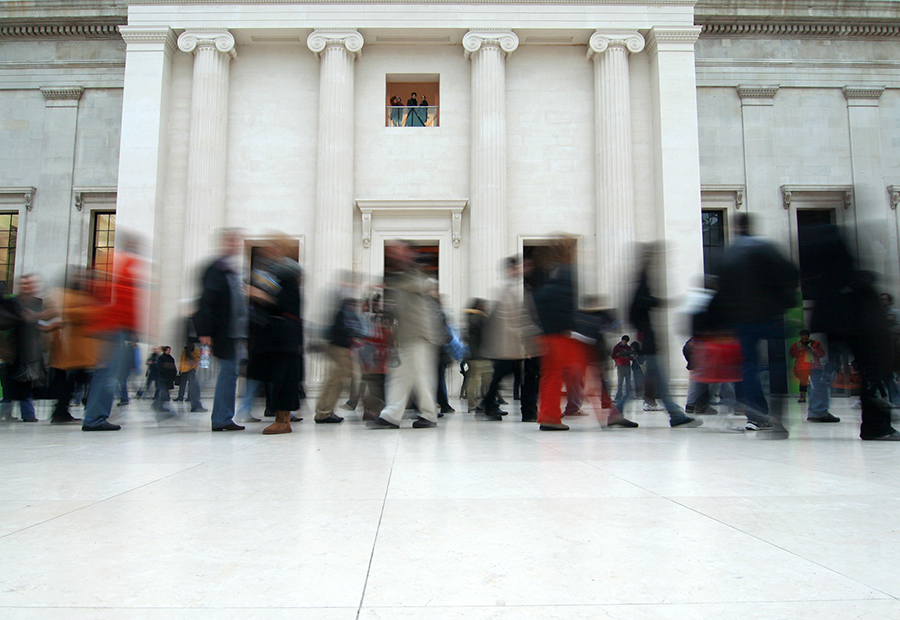How to Optimize Museum Visitor Experience and Operational Management with Video Content Analysis

Many museums have deployed video surveillance systems for security purposes because it helps them monitor various areas of a museum property: Whether protecting a priceless work of art, an exhibit hall, a storage area, or a parking garage, video surveillance captures footage that can be vital for investigating incidents, and it enables security staff to observe what’s happening on the property in real-time. However, that video footage can be useful not only for security, but also to optimize operations and improve the visitor experience. To complement their investment in video surveillance, some museums are deploying video content analysis software.
What Does Video Content Analysis Enable?
Video content analytics technology processes video, identifies objects in the video footage (people, vehicles, and other items), and indexes them so that footage can be easily and quickly searched and analyzed. It empowers operators to automatically and quickly search and filter video footage for actionable information, and also aggregates and analyzes video content over time and indexes that metadata, so it can be harnessed and visualized for tracking trends and driving informed decision-making.
VIEW: ON-DEMAND WEBINAR, A COMPLETE PLATFORM APPROACH TO VIDEO CONTENT ANALYTICS
Understand Traffic Patterns
For planning and operational purposes, museums have a vested interest in gaining a better understanding of their visitor traffic: how many visitors attend, where they walk, which exhibits they view, which entrances/exits/restrooms are most often used, and how many visitors enter the gift shop, etc. They may discover that some entrances and exits aren’t fully utilized, which can create crowding in other areas. By analyzing traffic trends over time, museums can preemptively prepare for expected traffic peaks, whether annually, monthly, weekly, daily, or even hourly. With that information, they can proactively plan how to manage these peaks, by hiring more staff or redirecting staff to the highest traffic areas. Through data visualization, museum managers can understand visitor trends, and improve the flow of traffic. By doing so, they improve public safety and the visitor experience, which increases the probability that visitors will return to the museum someday.
Video intelligence software can not only deliver heat maps that illustrate where visitors walk (the most common pathways), but also can demonstrate the average dwelling duration (the length of time visitors stand in a particular area). For example, a video analysis solution can display average dwelling duration as a scatter plot that illustrates how many people went to specific areas/exhibits. Such data can help a museum understand common pathways, plan for special events or attractive exhibits that draw crowds, or make decisions about where to place entrances/exits, informational signage and display kiosks. Or, they may consider whether a particular exhibit would be better situated in a different location within the museum.
Improve Staff Engagement
When it comes to planning staff deployment, many museum managers must rely on gut instinct or anecdotal memory of which areas of a museum draw the most visitors — whether on a regular basis or for special events. But video content analytics provides actual data that helps museum managers plan their staffing needs for the day, week or month. In addition, a video intelligence system can be configured to send real-time alerts to security and operational managers whenever an unusual crowd or queue forms in the museum, which might indicate the need for response from security or customer service staff.
Improve Building Maintenance
Similarly, management can use real-time alerts to optimize museum cleaning and maintenance. For example, museum managers can set up customized real-time count alerts to trigger alerts whenever a certain threshold of people entering a restroom has been reached. Maintenance staff can then be deployed to clean the bathroom as needed.
Gather Visitor Demographics
Museum managers can track how many people visit an exhibit or information kiosk and even observe demographic data points, such as the percentage of women versus men visiting specific areas of the museum, to further understand and cater to their audiences. This can direct museums in identifying relevant displays to construct or prized items that could be exhibited on loan to attract new visitor demographics or closely engage typical visitors.
Drive Gift Shop Operations
Via heatmaps, path data and trend analysis, video content analytics technology also enables museum merchants to measure hotspots, traffic flow, dwell time, and product display activity in gift stores. They can also analyze trends over time, ultimately empowering store operators to maximize store layout, identify underutilized and strategic areas, improve navigation for visitors, and drive sales.
Ensuring a Positive Visitor Experience
Today’s video analytics technology gives museum operations, security and marketing personnel the multi-faceted and valuable business intelligence that they need to deploy staff productively, manage traffic flows, and understand their audience. With this data they can deliver a positive visitor experience again and again.
More on video analytics for hospitality and entertainment here.
Signup to receive a monthly blog digest.